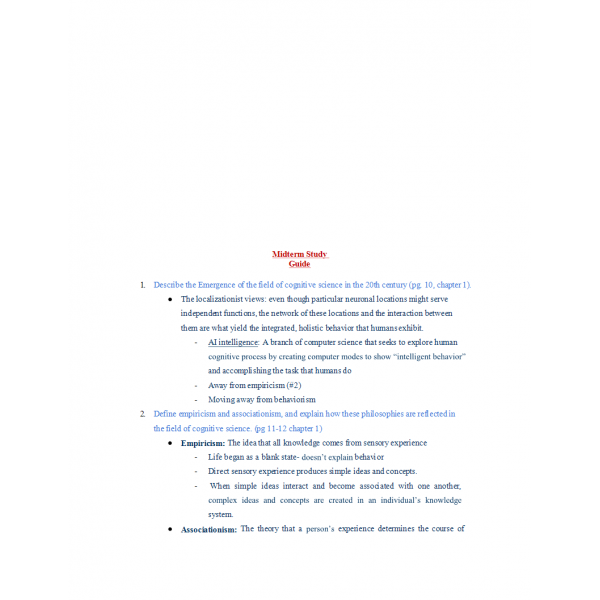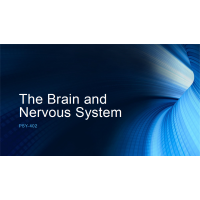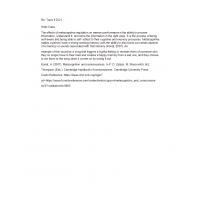PSY 402 Midterm Exam
1. Describe
the Emergence of the field of cognitive science in the 20th century (pg. 10,
chapter 1).
2. Define empiricism and
associationism, and explain how these philosophies are reflected in the
field of cognitive science. (pg 11-12 chapter 1)
3. Briefly explain Donald Hebb’s Statement, “Cells that fire together, wire together.” What
significance did this proposal have on neuroscience?
4. Define myelin, the process of
myelination, and the purpose of myelination. What happens when certain
diseases cause demyelination?
5. Describe the structure and
functions of the following cells: Schwann Cells, glia, microglia, and
neurons.
6. Describe the structure of a
neuron and the functions of its component parts.
7. Explain the process of neuronal
signaling, including membrane potential, threshold potential, and
equilibrium potential (chapter 2; pg 27)
8. List the primary excitatory and
inhibitory neurotransmitters.
10. Identify the relationship
between sensation and area on the somatosensory cortex of the post-
central gyrus (chapter 2; pgs 54)
11. Identify the major lobes of the
brain and the corpus callosum. What are the primary functions of the
corpus callosum and lobes?
12. Describe the following parts of
the brain (including their component structures): Brainstem, diencephalon, and
telencephalon. Briefly describe the primary function of each major component.
13. Describe the location and
purpose of the following brain structures; basal ganglia, pons, corpus
callosum, limbic system
14. Describe computed tomography-
what is the purpose of a CT Scan, and what is the basic process for a
scan?
15. Describe positron emission
tomography- what is the purpose of a PET scan, and what is the basic
process for a scan?
16. Define rods and cones,
including their functions and primary locations.
17. Identify the primary visual pathway.
18. Identify the primary
olfactory pathway.
19. Identify the primary auditory cortex.
20. Describe deficits in
perception related to injuries in the optic nerves.
21. Identify sympathetic and parasympathetic responses.
| Institution & Term/Date | |
| Term/Date | Grand Canyon University |
PSY 402 Topic 4 Midterm Exam - Study Guide
- Product Code: 2022
- Availability: In Stock
-
$25.00
Related Products
Tags: PSY 402





















